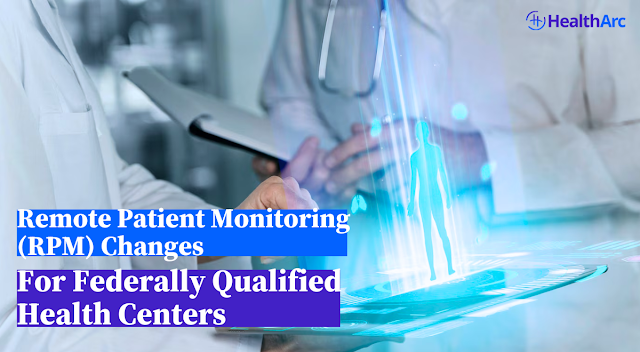What is Medication Therapy Management (MTM), and what is its impact on patient care?
MTM, or Medication Therapy Management, is an organized service that is directed toward optimizing the use of medication, managing the therapy outcomes, and minimizing potential negative effects of medication. It was formed under the Medicare Prescription Drug, Improvement, and Modernization Act of 2003, and the goal was to make medication treatment as safe, as effective, and as appropriate as possible. MTM is patient-centric. With the help of pharmacists in the multidisciplinary team and through a proactive approach, MTM assists patients in managing their medications, especially those that require long-term treatment and those that are on complicated medication schedules.
How is MTM Implemented in Real Life?
The
key features of MTM are five in number, namely, comprehensive medication review
(CMR), personal medication record (PMR), medication- or therapy-related action
plan (MAP), intervention or referral, and documentation alongside the
intervention with follow-up. During the CMR, pharmacists conduct a review of
all medications that are being prescribed to the patient, including
over-the-counter medications, supplements, and herbal preparations, to look for
potential problems like drug interaction and under- or overdosing. The PMR is a
document that patients are given that contains a list of their medications. As
the title suggests, it looks after the patient’s medication and gives guidance
on the issues. The MAP serves as a guide for the patient, offering solutions to
the problems outlined in the action plan. The pharmacist can take action or
resolve the problems by consulting the appropriate prescribing clinicians or
referring the patients to other members of the multidisciplinary team, with the
assurance of follow-up for the monitoring.
A good example comes from a Healtharc-inspired case study: Sarah is a 68-year-old woman living with diabetes, hypertension, and dyslipidemia. She was having problems adhering to her medication due to a complicated regimen and a mix of eight medications. During her MTM session with a pharmacist, she discovered a possible interaction with her supplement and diabetes medication that would reduce the medication’s effectiveness. The pharmacist developed a streamlined PMR, improved her medication scheduling, and collaborated with her physician to change a medication to one with fewer side effects. Within 3 months, Sarah achieved MTM milestones, and her blood glucose and blood sugar levels normalized.
Why is MTMimportant for patients with chronic conditions?
MTM is particularly vital for patients with multiple chronic conditions like diabetes, heart failure, and COPD. The number of medications a patient with these conditions takes increases the likelihood of errors, and MTM is specifically designed for high-risk patients to safeguard them from medication treatment misalignments with the progression of a patient’s condition. A study was conducted on patients with diabetes and heart failure and found MTM raised medication adherence to 4.6% and decreased hospitalization costs by over $300 per patient. MTM addresses clinical issues like under dosing and non-adherence, which improves overall healthcare outcomes.
What Are the Benefits of MTM for Patients and Healthcare Systems?
MTM programs have benefits for all of the three spheres—clinical, economic, and humanistic. From a clinical perspective, outcomes greatly improve; for example, a decade-long study involving 9,068 patients found that 55% of their conditions showed improvements due to MTMs. From the economic viewpoint, there are observable returns on investments, with one health system covered with an MTM program showing savings of $1.29 for each dollar spent on MTM due to avoided hospital and emergency department visits. According to the humanistic approach, the patients reported high levels of satisfaction, with one survey reporting 95.3% of patients feeling their health had improved with MTM.
Consider the example of John, a 72-year-old patient with chronic heart failure and arthritis. With the use of Healtharc’s platforms, his MTM pharmacist performed a CMR and found that John was on a suboptimal dose of one of his heart medications, which would worsen his symptoms. With proper dosing and education on the medication’s use, John’s symptoms improved greatly. MMost importantly, John was able to avoid an ER visit, which also saved him a significant sum of money. John also gained confidence in being able to manage his medications, which demonstrates MTM’s ability to empower patients.
What Are the Available Points of Access for Patients to Receive MTM Services?
For those who are eligible, MTM is available through Part D Medicare plans. Patients who are likely to qualify are those who have chronic conditions, take multiple medications, and have high prescription drug expenditure. MTM services are accessible through pharmacies, clinics, and telehealth services. For example, HealthArc MTM services are personalized through the use of integrated patient information, which allows pharmacists to complete MTM evaluations and coordinate care virtually. Patients may inquire with their pharmacists or health plans about non-CMS MTM services or eligibility, and some health systems do provide non-CMS MTM services.
What Is the Reasoning of the Healthcare Industry to Make MTM a Priority?
MTM has brought several stakeholders together, including the patient, pharmacist, and provider, thereby bridging the gaps in healthcare. MTM assists in outlining precise plans for medication use and in clearing hurdles that may be financial or logistical; hence, in addition to a positive health outcome, the patient gets an improved quality of life. MTM is a key component of modern pharmacy practice requiring emphasis as healthcare systems move in the direction of value-based care. Sarah and John, the patients, are examples of how MTM makes such a positive difference for patients with multi-layered medication needs and why it needs to be available to all who require it.



%20Changes%20for%20Federally%20Qualified%20Health%20Centers%20(1).png)
Comments
Post a Comment